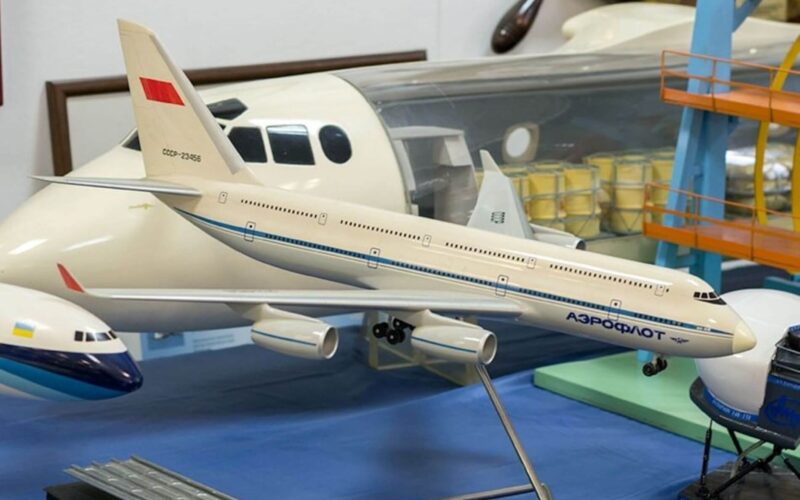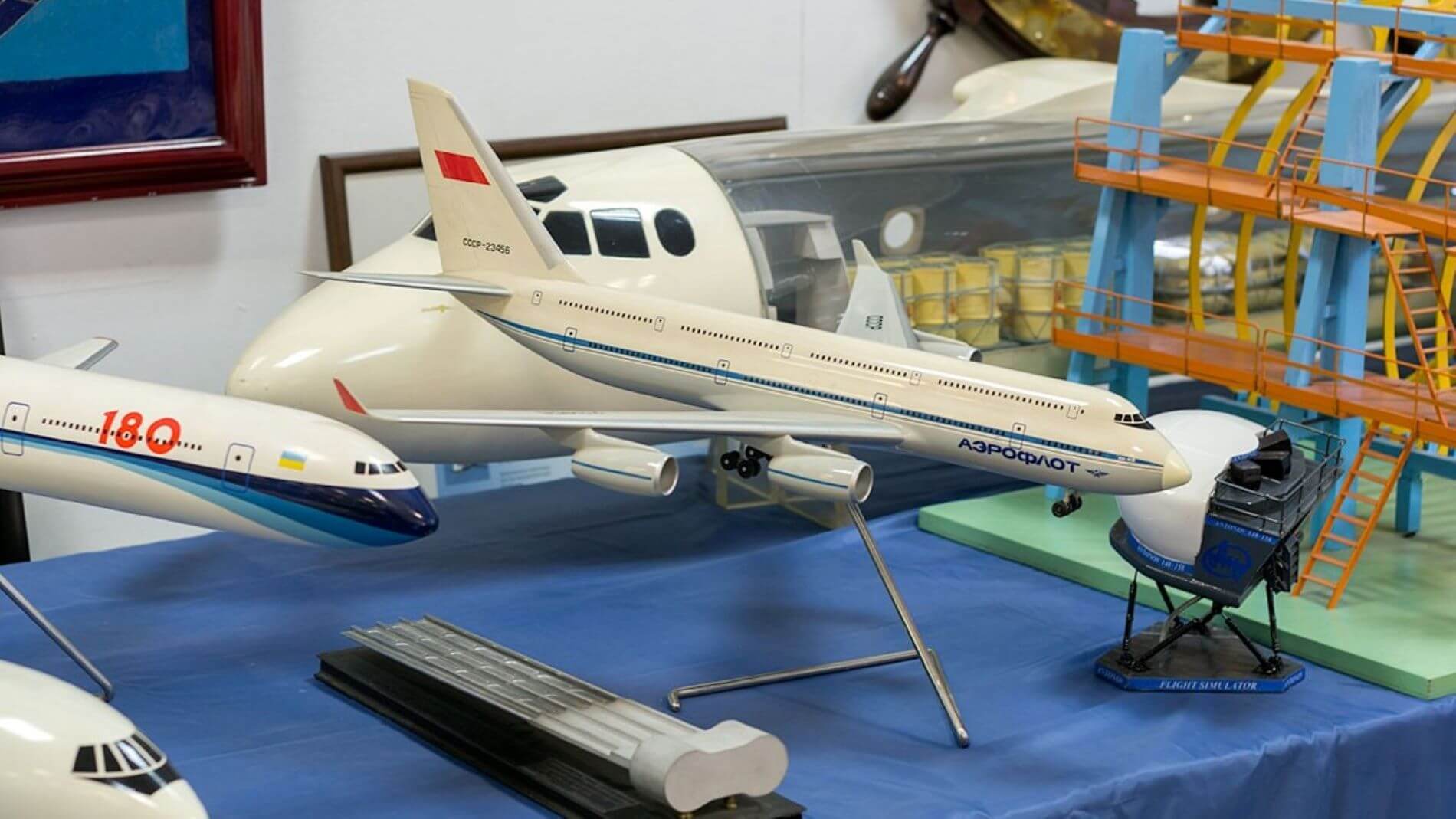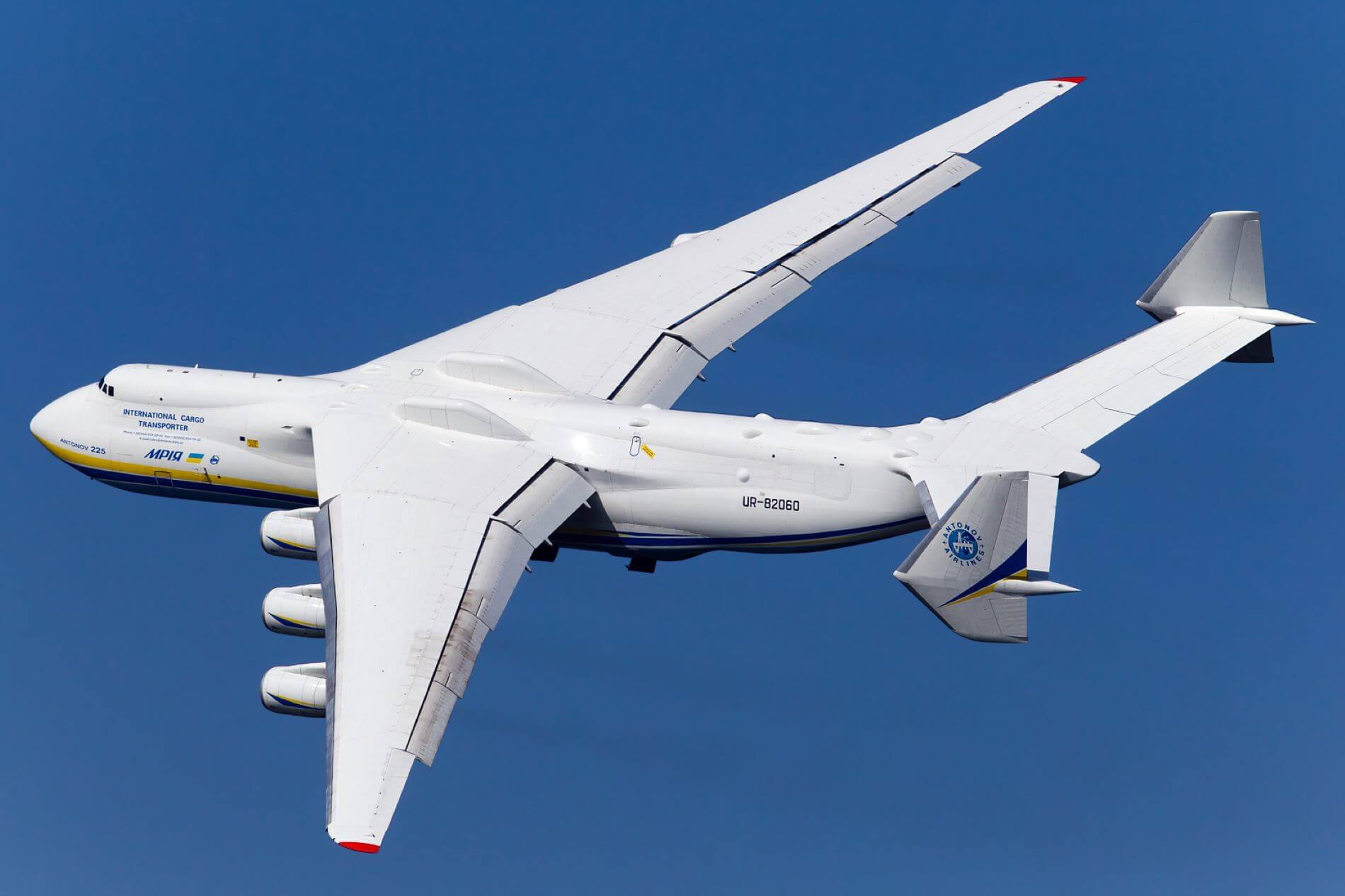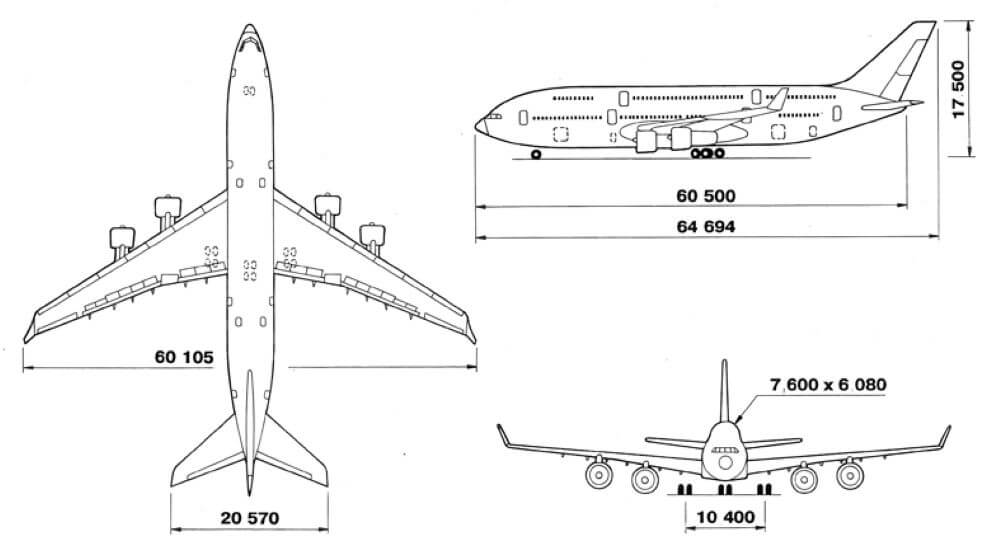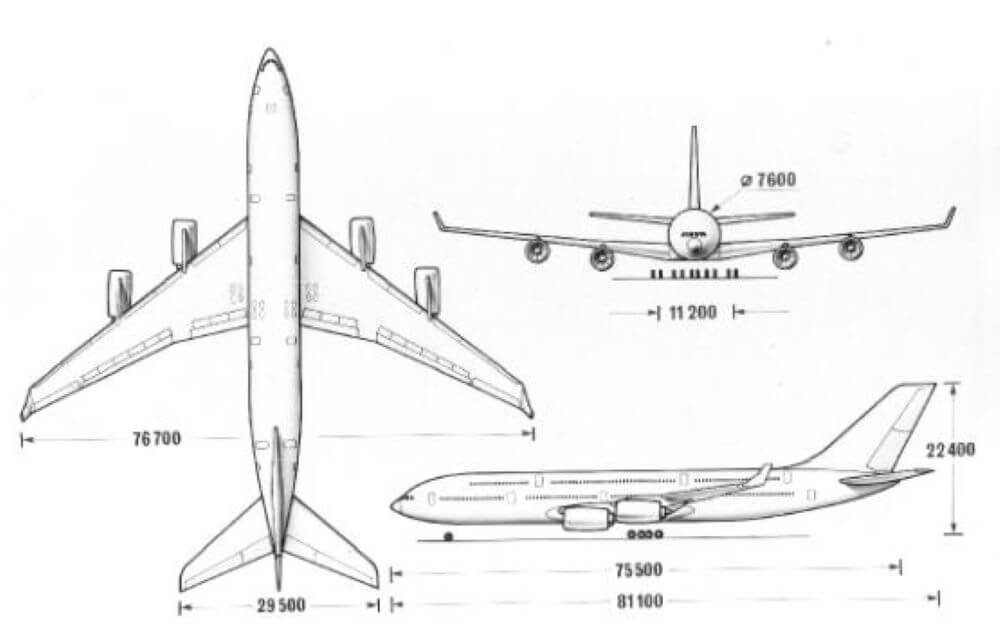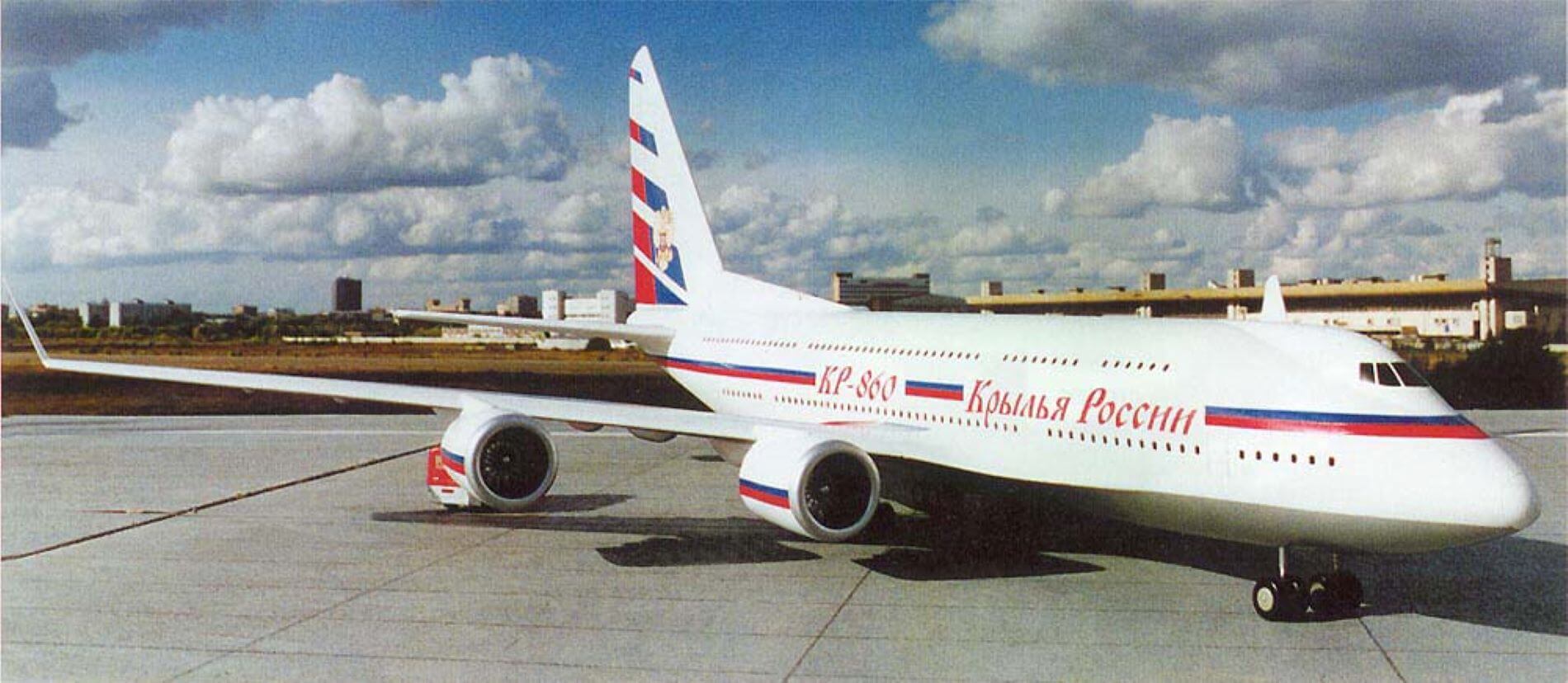The logic behind the design of larger and larger airplanes was solid. Hub-and-spoke model was proven and effective, with smaller airports ferrying their passengers to larger ones, and those – hubs – being connected amongst each other by wide-body airliners. You can’t increase an amount of aircraft landing and taking off at a hub simultaneously, therefore, you have to increase the capacity of an aircraft.
Between the late 80s and the early 90s a number of ever-larger airplanes were in the works. Airbus had A3XX (later A380), Boeing had NLA, Lockheed-Martin had VLST, McDonnell Douglas had MD-12. The ex-Soviet aviation industry, now in the middle of capitalist reformation, followed closely. It developed its own superjumbos, larger than one another, aiming to overthrow the supposedly upcoming Western dominance in the realm of 500+ seats.
…except it was not exactly so. At least in the case of Antonov.
An-418: The First Attempt at A380
(Image: Frequentflyers.ru)
In the early 80s Antonov An-124 Ruslan was the largest transport aircraft in the world, later overthrown only by its enlarged version – An-225 Mriya. The new giant transporter had a lot of potential, and so, an idea to turn it into an airliner was born.
An-418 was supposed to have An-124’s fuselage, repositioned wings, and upgraded D-18TM engines. It would have been able to transport between 650 and 800 passengers depending on the configuration, and fly to the ranges of up to 12000 kilometers (almost twice more than An-124 with an average load).
The work on the aircraft was frozen in 1985, relocating resources to the development of An-225 Mriya. But in 1987 it was renewed, and reportedly, two fuselages were built, intended for prototypes. Also reportedly, both of them were later retrofitted into regular cargo An-124s, as there was neither money nor need to continue development of now antiquated superjumbo.
After Airbus A380 took off in 2005, rumors about it being a copy of An-418 started circulating. Supposedly, the fuselage is identical, and only the nose was remodeled to make the aircraft look different. Those rumors persist to this day, despite the two aircraft being quite different in their shape, size and proportions.
An-248: The Passenger Mriya
(Image: mark steven / Wikipedia)
In 2010 Antonov made a press release which boldly stated that Airbus A380 now has a challenger: An-248. The new plane is going to have a price of $280 million (less than two-thirds of what A380 costs), and all Ukrainian manufacturer needs to build one are 3 to 4 months.
It was going to be refurbished An-225 Mryia, heaviest airplane in the world, of which the only one example was built. Another one was left in an unfinished state, and could have been considered as a candidate for passenger version.
According to the press release, the plane would have carried between 605 and 715 passengers depending on a configuration – a rather conservative estimate considering its size. Reportedly, Ukrainian Transport and Communications ministry was onboard, and some airlines from the Middle East were “very interested”.
Except for the press release and some drawings of indiscernible authenticity, there was no information on the project, and no actions followed. It might have been a fake, or the project may have been very short-lived. We may never know.
Double-decked Il-86: The Reversed Boeing-747
(Image: Frequentflyers.ru)
According to some less-than-reliable sources, one of the early versions of Il-86, the Soviet answer to B747, was supposed to have a short second deck as well. Only the deck would have been located at the bottom of the plane instead of the top, occupying cargo compartments that were deemed unnecessary. A scheme of such a plane, with early engine and tail configuration, can be found. Supposedly it dates to 1972. There is no information on how seriously such a development was looked into.
Il-96-550: Double Camber
(Image: Frequentflyers.ru)
By the 90s Ilyushin Il-96, the long-range version of Il-86, was the only wide-body airliner in production in Russia. In order to compete with A380 without building an entirely new airplane, an idea to add a second deck was briefly considered.
This would have increased its capacity to 550 passengers, but the new airplane would have needed new engines. Kuznetsov NK-93 – an unique ultra-efficient propfan – was in development, and was regarded as perfect for such a plane.
NK-93, although flight tested two decades later, stalled. There were other options for Il-96-550 – including PS-90A20 (of Frigate Ecojet-fame) and even an exotic one, proposing to power the aircraft by two Rolls-Royce Trent XWBs. All those proposals remained in dreams, and in low-quality CGI models from the 90s.
Il-196: Bloated Camber
(Image: Frequentflyers.ru)
Another one of Ilyushin’s attempts at producing a competitor for Airbus A380, this time in the shape of a plane that resembles Il-96 stretched in diameter. There is very little information about this project, except for an intended passenger capacity – 680 to 800 seats. Ilyushin worked on it in the early 2000s and considered it as a further modernization of Il-96. At least in 2008, according to the company, there was still hope to manufacture the first prototype by 2012, and later to compete with Boeing 777X. Russian press quoted an unnamed spokesperson saying that all hope hinged on the success of NK-93: possibly, the plane was once again doomed by the engine’s never-ending development; possibly, it did not have much hope from the start.
KR-860: The Rebirth
(Image: Testpilot.ru)
The plane was Sukhoi’s attempt to enter the super jumbo market. With a passenger capacity between 680 and 1000 seats and an ambitious cargo version optimized to fit shipping containers, it went further than many similar projects.
“KR” stood for “Krylya Rosii” – “Russia’s Wings”, as the plane was supposed to single handedly revitalize country’s aviation industry in the early 2000s. Most of former design bureaus were involved in the project, developing various components, Sukhoi heading the works.
If built, it would have been the largest plane in the world, and the only one with three-aisle passenger cabin (Tu-304 also had it, but its development was frozen at the time). It would have had foldable wing consoles and built-in airstairs – all to be able to use existing airport infrastructure.
Tu-404: The Largest of Them All
(Image: AeroTime News)
A continuation of Tupolev’s “-04” family, this project – at least in a “flying wing” configuration – would have been much, much larger than any other airplane ever built. In fact, it is a bit too big to fit in this article, requiring a separate one. Please, find it here:

